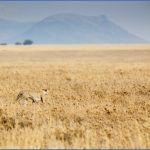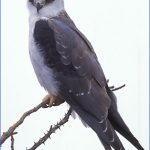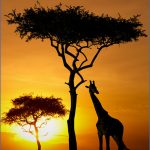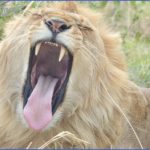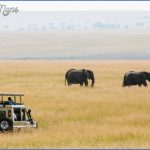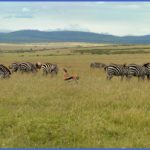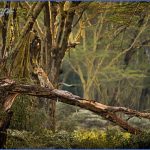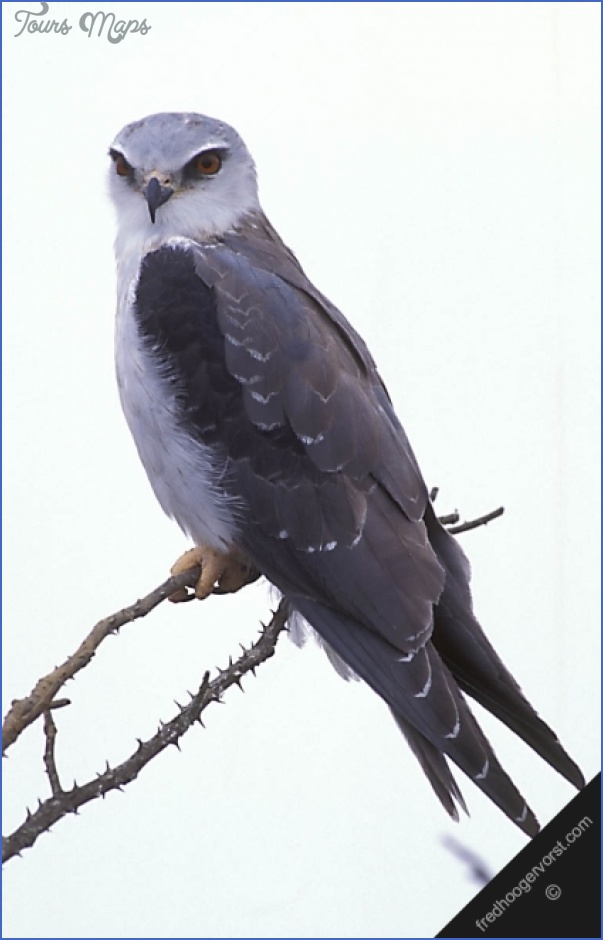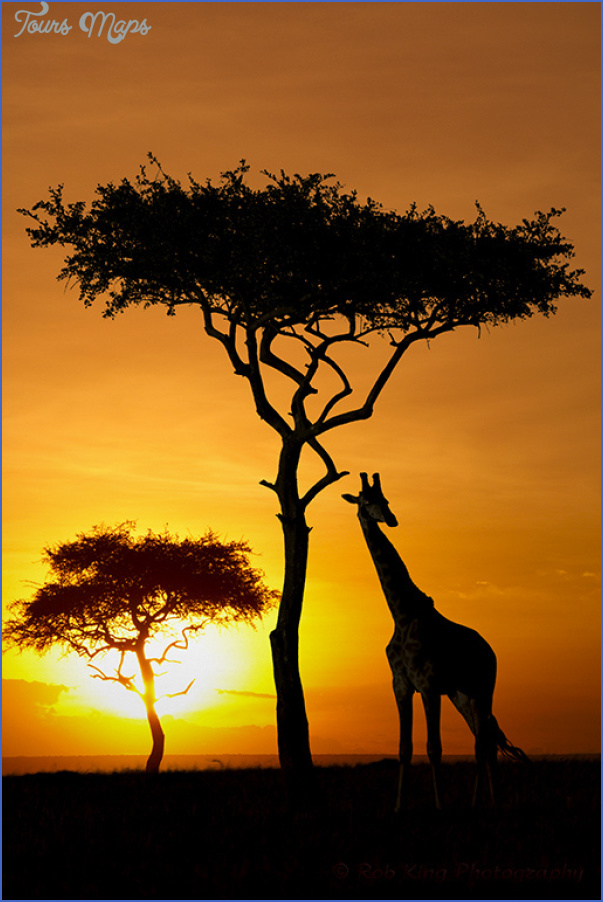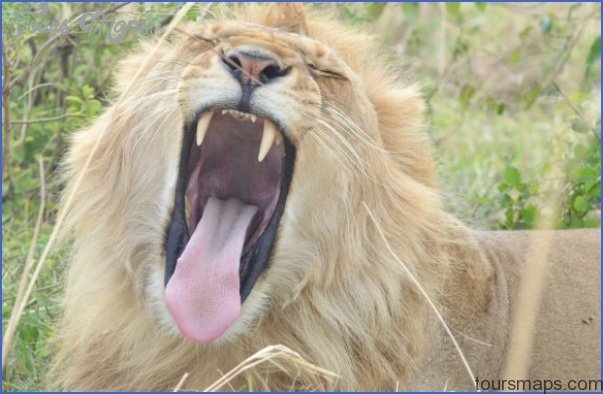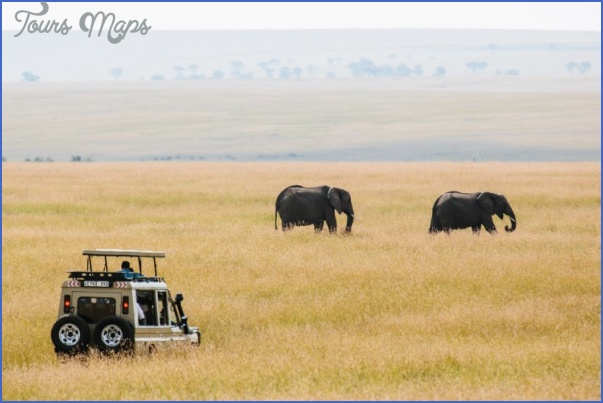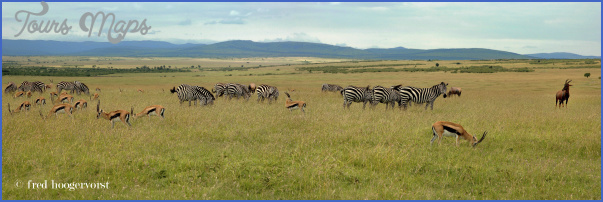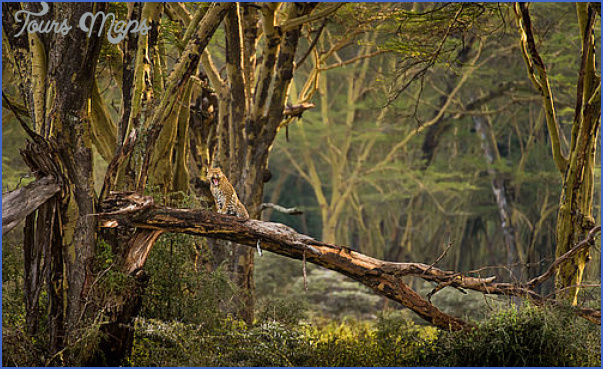Robert, a Ndorobo with a family to support, lives in the Karissia Hills about 300 km north of Nairobi. Like all Dorobo, he isn’t at all sure when he was born (time is not important) but he knows precisely in which forest cave he was born because a sense of place is what matters. So Robert isn’t able to say precisely how old he is but he appears to be in his forties. His animal tracking skills, his knowledge of edible plants and his ability to identify a wide range of forest creatures is second to none. And like many Dorobo people, he frequently makes use of honeyguides – rather drab, thrush-sized, olive-green and brown birds – to guide him to bee nests.
My opportunity to participate in this amazing bird/human partnership came about a couple of years later. Luca had invited me to their summer camp in the
Mathews forests; Robert Lentaaya was to be there too. I spent ten days with them camping in one of the most isolated locations – apart from the Sahara – I’ve ever camped in.
A couple of days into my forest visit and I had staggered back to the campsite after a morning’s hard walking (accompanied, as always away from camp, by two of our Samburu helpers, one of them armed in case we encountered anything dangerous such as African Wild Cattle). Lentaaya, as everyone referred to him (rather than his Christian name), was agitated. ‘Ah, Malcolm, it is a pity you were not here because a honeyguide came to the camp and stayed all morning calling to me. But I told him we could not go with him until you were back. And now he has gone. We will go to see if we can find him,’ he said.
Kenya Nature Wildlife And Travel Photographer Photo Gallery
So began one of the more surreal half hours I have experienced. We traipsed around the forest just behind our camp with Lentaaya talking loudly and shouting in all directions in his Dorobo language. He explained to me that he was asking the honeyguide for forgiveness; we were apologising for not helping him, for making him stay around the camp when he wanted to lead us. Unfortunately, the appeals didn’t work. This honeyguide had clearly taken the huff. After half an hour of trying to coax him back, Lentaaya gave up.
We were to wait another couple of days before we would encounter another. It happened as a small group of us were well away from camp sitting down for a rest on some boulders at the side of the little Ngeng River. The only sound I could hear was from the water tumbling over a jumble of stones. Lentaaya, with his much more acute hearing, sensed a very different sound.
‘Malcolm, a honeyguide; look up there in that tree’. And just a couple of metres above us, there it was. Clearly agitated, the bird was hopping excitedly from one twig to another, flicking its white-edged tail and calling incessantly, a persistent, double call to attract attention, a harsh, rattling chatter of a noise. It is the sort of noise, close-by, that’s hard to ignore. Suddenly, it was all I could hear; the noise of the stream had somehow faded out of my senses. We didn’t delay. We were up and off; the honeyguide led, all the while chattering and flicking; flitting ahead from branch to branch, past trees encased in vine stems and other climbers. And throughout, Lentaaya was calling back to the bird, keeping in touch with it as it led the way.
Not once did we lose sight of the honeyguide. And not once did we fail to hear it call. Never more than 10 m or so ahead of us, this bird had no intention of losing us amongst the trees and shrubs en route to the bee nest I presumed it needed us to open. Lentaaya led with me in tow crunching through the brown leaf litter for maybe 300 m until we reached a big forest tree, perhaps 30 m high. It was certainly very tall.
Maybe You Like Them Too
- DUBAI UNITED ARAB EMIRATES
- Anniston Map
- Wildlife Travel Guide
- Wildlife Travel To Alonissos
- National Wildlife Travel

